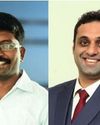
In a world buzzing with technology and fast food, our children are facing an unexpected enemy in the form of ‘Lifestyle diseases’. Once thought to be a disease of adults and senior citizens, conditions like obesity, Type 2 diabetes, PCOD, and hypertension are now making alarming inroads into the lives of our children. But what causes this shift? And more importantly, how can we combat it?
THE MODERN PLAYGROUND: A SHIFT IN HABITS
Gone are the days when children played ‘pandi/hopscotch’, walked to school, or swam and ran as part of their daily lifestyle. They don’t participate in household chores or run errands walking up to the grocery store to pick up onions or oil for dinner. The only exercise they perhaps get is a sports class that they engage in for about 3-4 hours a week.
Imagine a typical day, waking up to an alarm, breakfasting on sugary cereals or milk with chocolate powder, spending almost all their time at school on a bench, spending hours glued to a screen for school and entertainment and going to bed late. It’s a routine that has become all too familiar. Children and parents are often oblivious to the consequences of their choices.
UNDERSTANDING THE RISKS: MORE THAN JUST NUMBERS
The statistics are staggering. According to the World Health Organization, the prevalence of obesity among children has dramatically increased in the past few decades. But it’s not just about weight; it’s about a host of related health risks, including:
This story is from the {{IssueName}} edition of {{MagazineName}}.
Start your 7-day Magzter GOLD free trial to access thousands of curated premium stories, and 9,000+ magazines and newspapers.
Already a subscriber ? Sign In
This story is from the {{IssueName}} edition of {{MagazineName}}.
Start your 7-day Magzter GOLD free trial to access thousands of curated premium stories, and 9,000+ magazines and newspapers.
Already a subscriber? Sign In

SpOvum launches Al-powered platform to boost patient support in assisted reproductive technology
The platform offers personalized information based on individual ART-related concerns, drawing from reliable, indexed medical guides to provide fact-based, tailored answers.

Hearzap launches Al-powered Philips HearLink 50 miniRITE
The company is projected to expand across 250 stores by 2026 and envisions accessible and affordable hearing care across the country.

Red.Health launches Al-driven medical emergency platform
In medical emergencies, every second matters but the current emergency medical systems face many challenges

OmniActive acquires ENovate Biolife
The company aims to double its top line, targeting Rs 2,000 crores within the next 5 to 6 years from the present Rs 1,000 crores.

5-year-old fish bone removed from 61-year-old's abdomen
The patient had previously undergone an endoscopic procedure five years ago at another hospital to remove a fishbone, but the current one had likely been missed at that time.

Large brain aneurysm treated using advanced stenting method
Aneurysm is a bulge or ballooning in a blood vessel of the brain. It’s often described as looking like a berry hanging on a stem.

37-year-old pregnant woman treated for aggressive breast cancer
Given the complexity of her condition, the team worked closely to develop a treatment plan that would balance the needs of both mother and babies.

45-year-old treated with robotic-assisted hernia surgery
This surgery marks a significant milestone for Park Hospital, which has successfully completed 50 robotic-assisted procedures.

Healthium Medtech, Healthcare Sector Skill Council (HSSC) sign MoU to boost skill development in Indian healthcare
Healthium and HSSC will collaborate to deliver training programs aimed at skilling, reskilling and upskilling healthcare workers, enabling them to address evolving challenges in the field.

Advanced ambulance fleet launched for Maharashtra's emergency services
The announcement comes amid ongoing bilateral meetings between Prime Minister Narendra Modi and Prime Minister Pedro Sanchéz Perez Castejon of Spain.